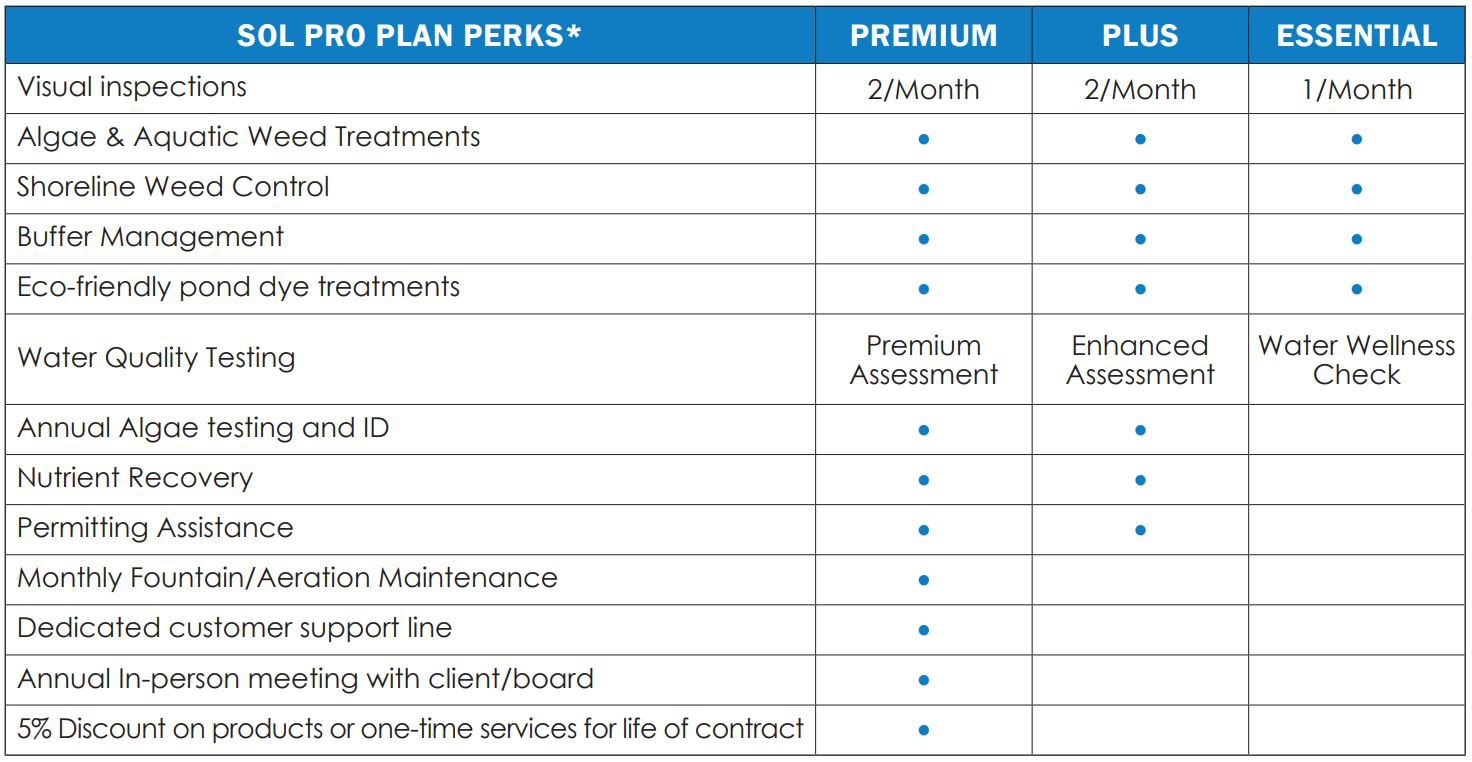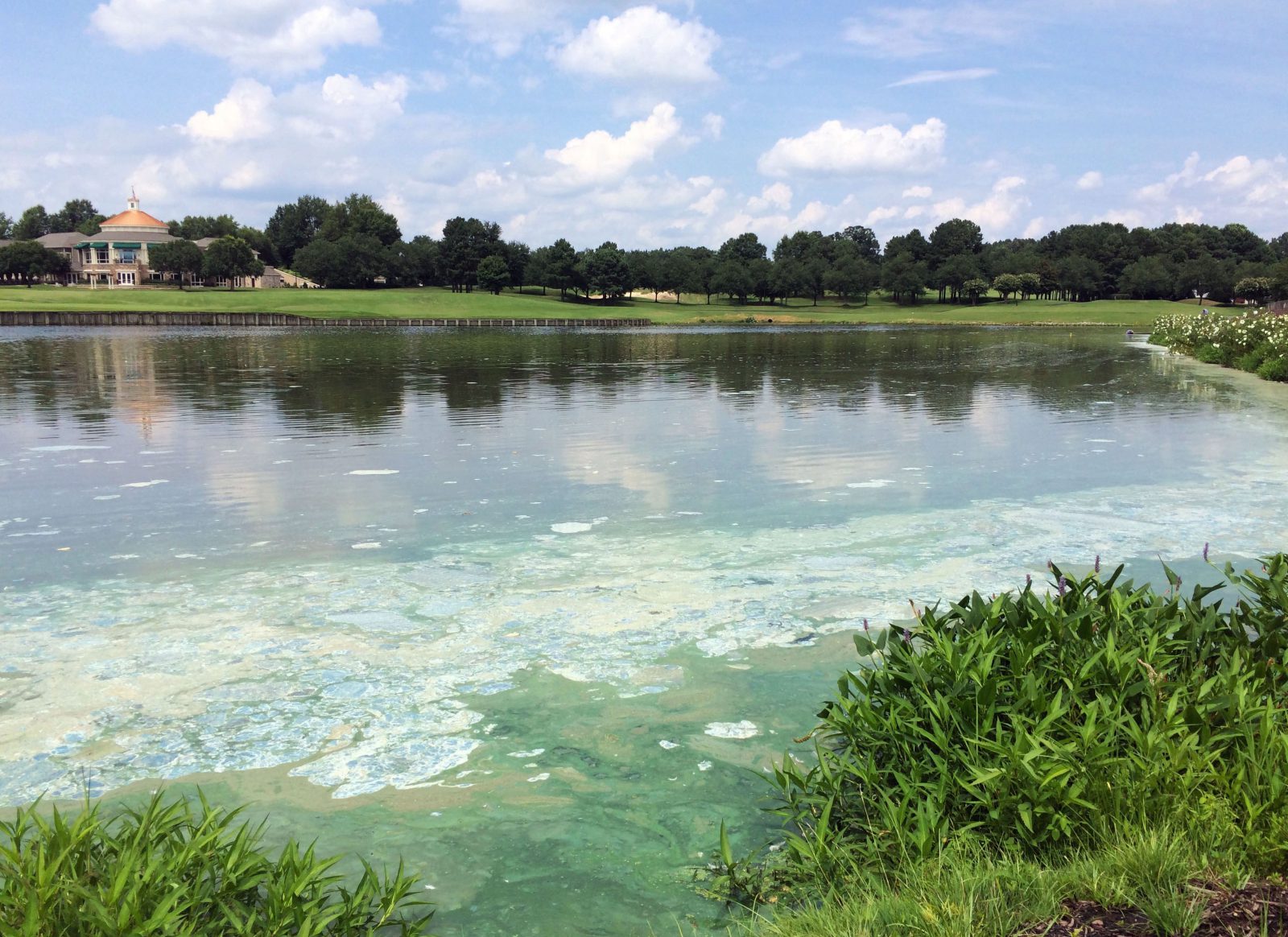
7 Tips to Prevent Harmful Algal Blooms In Your Community’s Waterbodies
A common issue that many communities experience is the growth of algae in lakes and ponds used for recreation and drinking water. Modest amounts of algae can often signify the waterbody is in good health, but excess levels may indicate that the natural balance of the ecosystem has been compromised. Without swift and proper management, certain species of algae, like cyanobacteria, can begin producing harmful toxins.
Following exposure to Harmful Algal Blooms (HABs), humans and animals can experience skin rashes, liver and kidney toxicity, nervous system problems, respiratory complications and in extreme cases, even death. Cyanotoxins also have suspected links to degenerative diseases like ALS, Alzheimer’s, and Parkinson’s.
To help limit the growth of HABs in your community waterbodies, SOLitude recommends the following sustainable measures:
HABs can occur naturally but have been a problem for decades due to the negative environmental impacts associated with urban development, mass agriculture, and pollution. In recent years, private research and greater public awareness around the subject of HABs have brought nationwide attention to dangerous cyanobacteria blooms like the ones that plague large lakes such as Lake Okeechobee and Lake Erie each year.

Properly identify HABs
Accurate identification of harmful algal blooms is the first step to protect your community and pets from the negative effects of toxin exposure. HABs can manifest in parallel streaks or clumped dots. Other blooms may look like spilled blue, green, or white paint and turn the water a bright “pea soup” green. Keep an eye out for soupy or oily scum on the surface of the water.
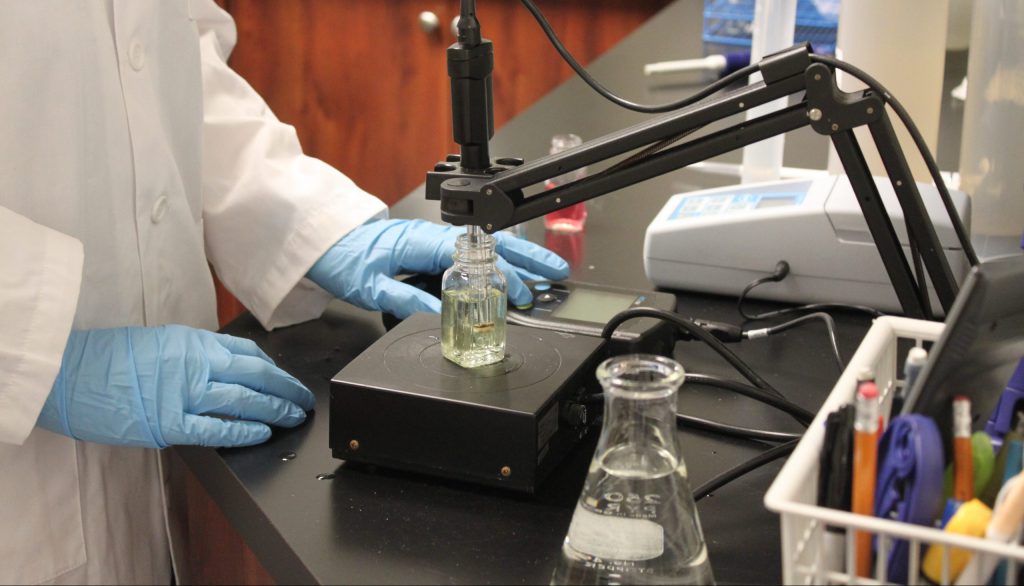
Assess your water quality
Lake and pond owners often wait until after an algae bloom appears to test water quality, but proactive, recurring testing by a professional laboratory can uncover primary causal factors before problems occur. As comprehensive data is tracked over time, it can be used to predict and intercept a bloom using eco-friendly solutions to restore balance to the aquatic environment.
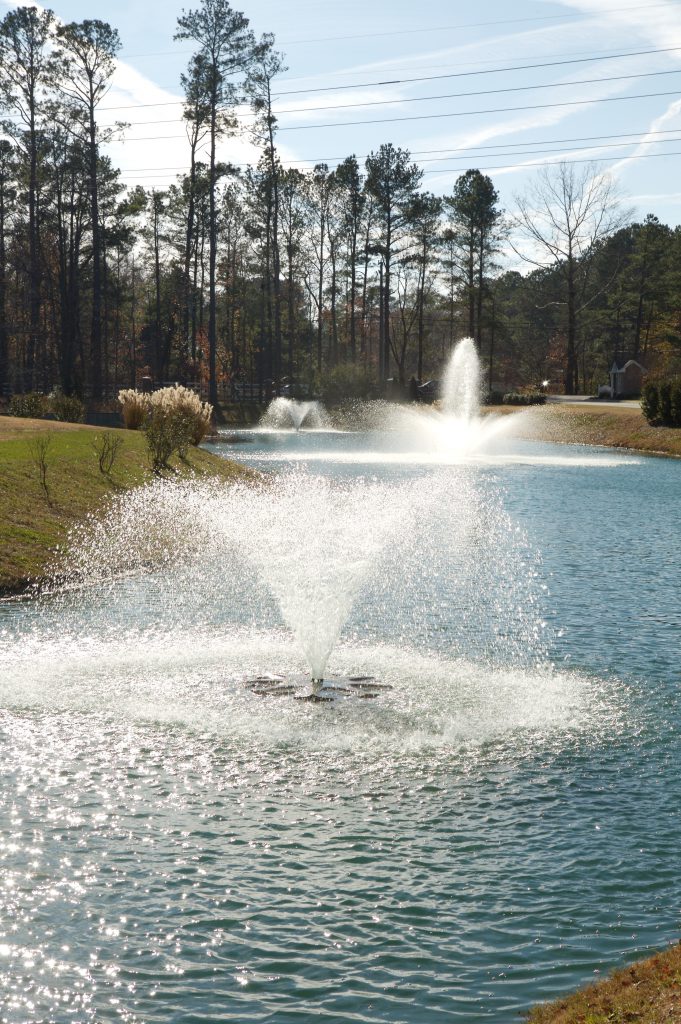
Increase dissolved oxygen
Floating fountains and submersed aerators can be introduced to help consistently circulate and oxygenate the water column, thus creating water quality conditions that do not sustain algae. There are many types of aeration solutions, including floating fountains, submersed aeration, and oxygen saturation technologies. The right option is selected based on the unique needs and physical characteristics of your waterbody.
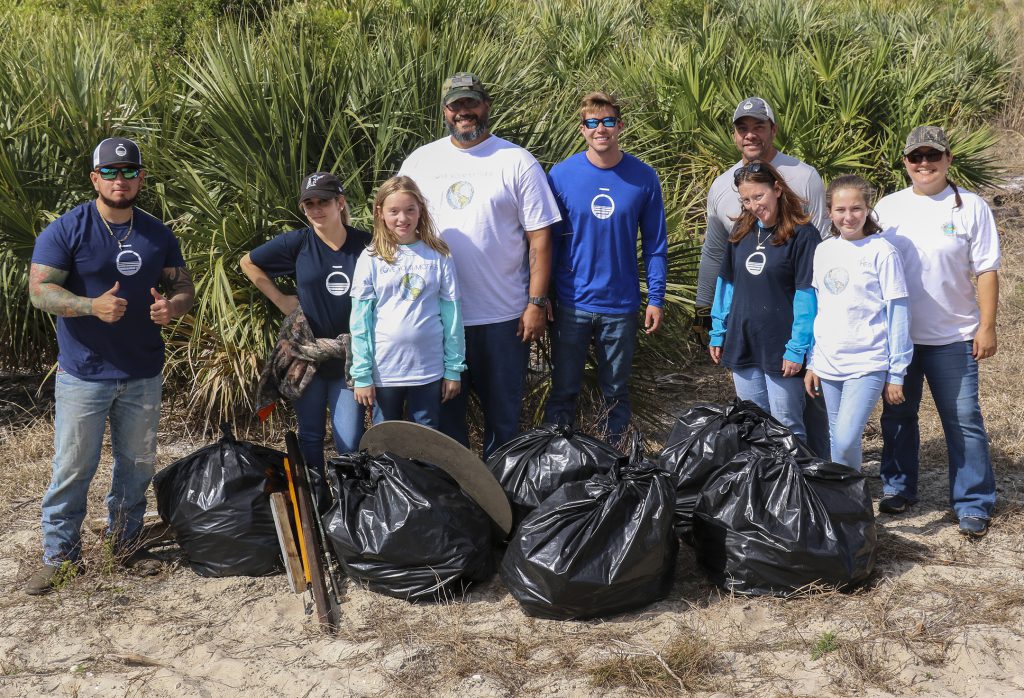
Dispose of organic materials
Following yard work, leaves, grass, and other debris should be bagged and removed from the property to prevent them from accumulating and decaying in nearby waterbodies. When organic materials are allowed to decompose in our water resources, they result in nutrient pollution, which can create muck, cloudiness, bad odors, and poor water quality conditions.
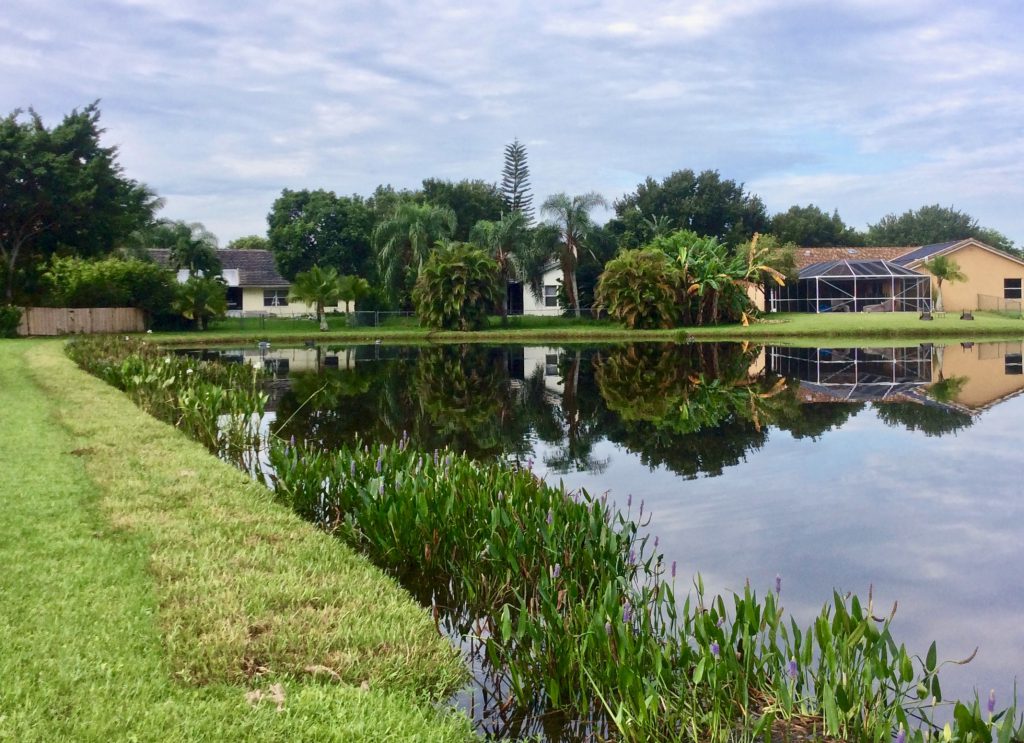
Restore aging shorelines
Runoff containing sediment, trash, pet waste, and other organic materials should be intercepted before flowing into the water during rainstorms. Plant native, deep-rooted vegetation around the edge of your waterbody to create a beautiful and functional vegetative buffer. And for shorelines that have become eroded, consider establishing a bioengineered living shoreline.
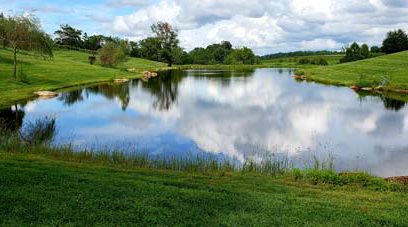
Apply beneficial bacteria
An effective way to prevent algae is by limiting its food source. This can be accomplished by introducing desirable enzymes and bacteria (think probiotics) to your water through a process called biological augmentation. These beneficial bacteria can help consume the excess pond nutrients that fuel nuisance algae blooms and help facilitate the degradation of organic pollutants.
Implement an Annual Management Program
Like a car, lakes and ponds require year-round maintenance to continue meeting your needs. Regular monitoring and upkeep can help keep your water resources beautiful and functional. The best way to achieve this is through a SOL Pro Management Plan, which is customized to the unique characteristics of your waterbody for long-term success.
By taking the appropriate proactive steps to protect your lake or pond from HABs and nuisance algae, you can help ensure the protection of native plants and wildlife and the enjoyment of your waterbody. Through this approach, the ecological balance and natural beauty of your waterbody can be maximized and appreciated for years to come.
